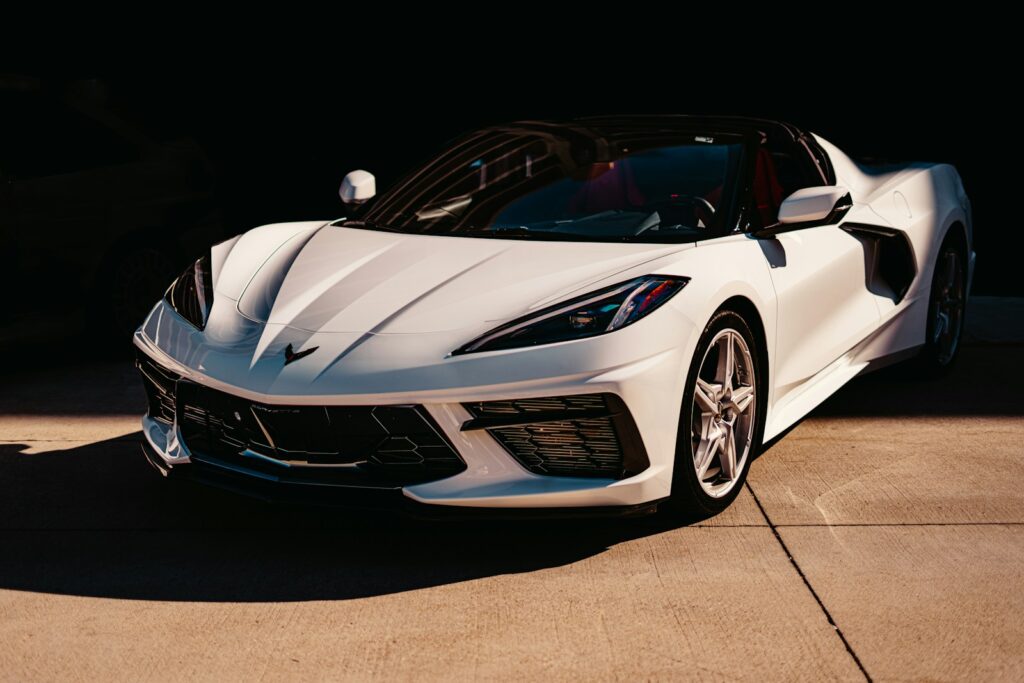
The world of motorcycling is a rich tapestry woven with tales of speed, innovation, and daring. Within this vibrant history lie machines that pushed the boundaries of engineering, dominated tracks, and captured the imaginations of enthusiasts, only to sometimes fade into the annals of time. These aren’t merely old bikes; they are engineering marvels, built with a singular focus on speed and precision, each carrying a unique story of glory and, occasionally, an untimely departure from the roaring spotlight they once commanded.
We are embarking on an exhilarating journey to rediscover these forgotten giants, motorcycles that, in their prime, stood at the pinnacle of performance and design. For various compelling reasons—be it complex mechanical intricacies, the inexorable shift of market trends, or simply being visionary designs far ahead of their time—many of these incredible machines receded from our collective memory. Yet, their formidable spirit ensnares, a latent power waiting to be unleashed.
Indeed, with the prodigious advancements in modern technology and stringent safety standards, many of these legendary motorcycles possess the inherent potential to stage a dramatic comeback. Imagine them roaring back to life with renewed vigor and contemporary relevance, thrilling a new generation of racing enthusiasts and discerning collectors alike. This in-depth article will meticulously delve into the compelling stories of some of these remarkable machines, exploring their original, groundbreaking impact, their distinctive features, and earnestly pondering how, with the right updates, they could once again redefine thrilling rides on the track and command admiration off it. Prepare to reignite your passion for automotive history as we shine a deserving light on these truly remarkable two-wheeled legends.
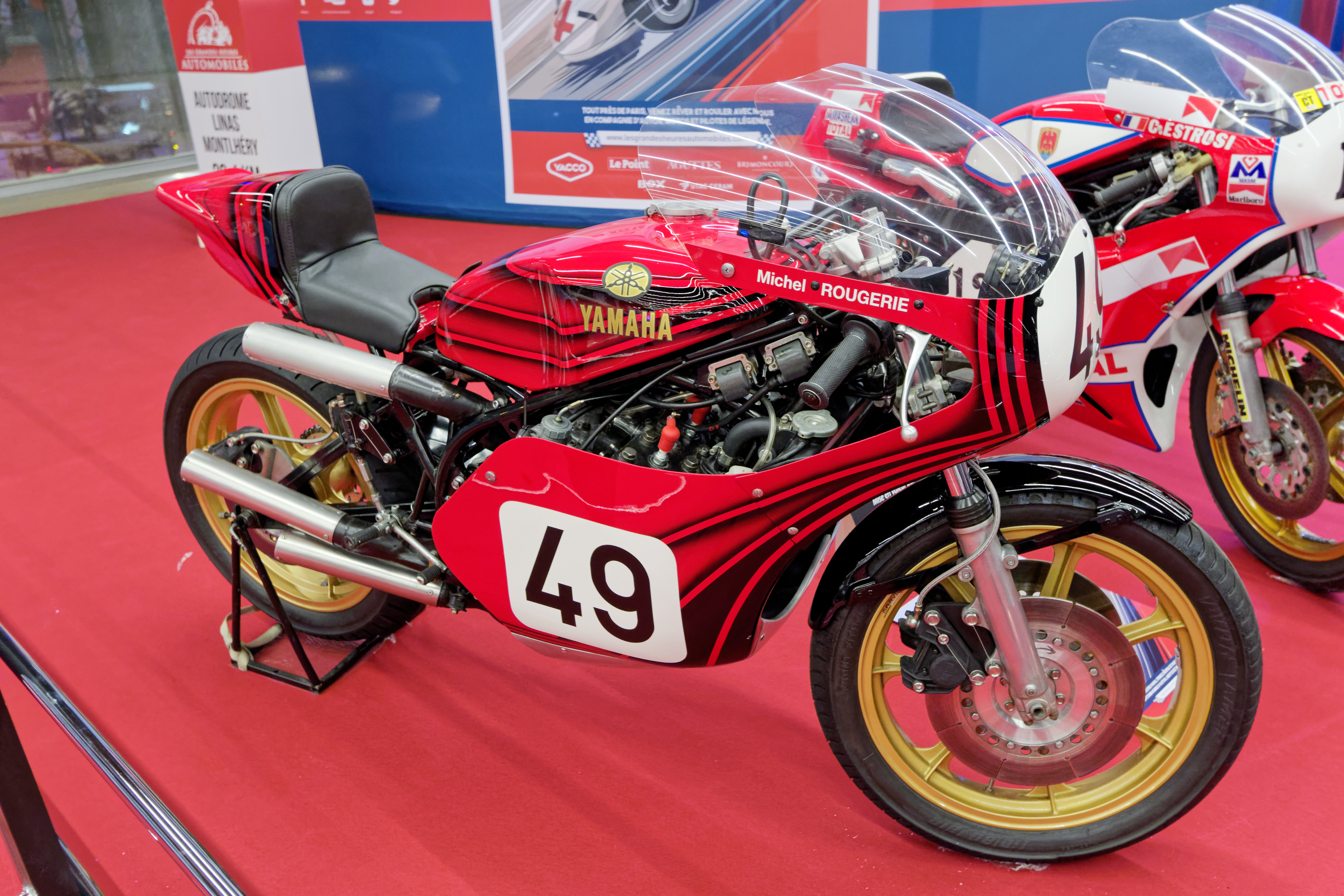
1. **Yamaha TZ750**
The Yamaha TZ750, a name that resonates with raw power and untamed performance, was unleashed upon the racing world in 1974, immediately establishing itself as an absolute beast. This two-stroke marvel quickly became a dominant force, tearing up Grand Prix circuits and consistently conquering the challenging AMA Superbike series throughout the 1970s. Its formidable presence was felt by every competitor, a testament to its radical design and unyielding power delivery.
At the very heart of the TZ750 lay a ferocious 747cc inline-four engine, a true marvel of two-stroke engineering for its era. This powerhouse unit was capable of producing “over 120 horsepower,” propelling the inherently lightweight machine to breathtaking top speeds exceeding “175 mph.” Such blistering performance, combined with its remarkably light chassis, often made the TZ750 a truly demanding ride, earning it a formidable reputation as a motorcycle only suitable for the most skilled, courageous, and experienced riders who dared to tame its immense power.
Despite its challenging nature, the Yamaha TZ750 was undeniably a fan favorite, celebrated extensively for its sheer, unadulterated power and its consistently exhilarating speed. Its legacy is one of pure racing adrenaline, a machine that truly embodied the spirited intensity of competition prevalent in the 1970s. It was a bike that, despite its potential for being “nearly uncontrollable,” became a legend due to its raw capabilities.
Imagining a contemporary version of this classic machine presents an incredibly exciting prospect. Equipped with modern advancements in handling dynamics, sophisticated electronic control systems, and refined chassis technology, a revamped TZ750 could ingeniously blend the thrilling, visceral nature of its original two-stroke engine with today’s cutting-edge stability and precision. Such an evolution would make it a formidable force on any track once again, captivating a new generation of motorcycling aficionados.

2. **Bimota V-Due**
The Bimota V-Due, launched with much fanfare in 1997, arrived on the scene with the bold ambition of fundamentally revolutionizing two-stroke racing technology. This was not merely another motorcycle; it was an innovative statement, meticulously designed to redefine what was truly possible with two-stroke power by integrating advanced fuel injection into its intricate design, a concept largely unheard of for two-strokes at the time. The potential for a paradigm shift in lightweight racing was immense.
Powered by a compact yet potent 500cc V-twin engine, the V-Due was meticulously designed to be a potent contender in various lightweight racing classes, producing a significant “around 110 horsepower.” These impressive specifications hinted at a bike capable of immense speed, unparalleled agility, and an immediate throttle response. Its lightweight construction promised nimble handling, an attribute crucial for competitive racing.
However, despite its highly ambitious plans and a clearly promising power-to-weight ratio, the V-Due’s journey was unfortunately plagued by persistent “reliability issues” during its crucial early release phase. These unexpected teething problems, though potentially resolvable with further development, ultimately tarnished its initial reputation, severely hindering its market acceptance and preventing it from fully realizing its groundbreaking potential.
Yet, the core concept behind the Bimota V-Due remains incredibly compelling and forward-thinking. With the benefit of modern, highly sophisticated fuel injection technology and significant advancements in emission control, a thoughtfully revived Bimota V-Due could finally fulfill its original promise. It could emerge as a truly fast, exceptionally agile two-stroke racer, perfected for today’s discerning enthusiasts, proving that its initial vision was simply years ahead of its time.
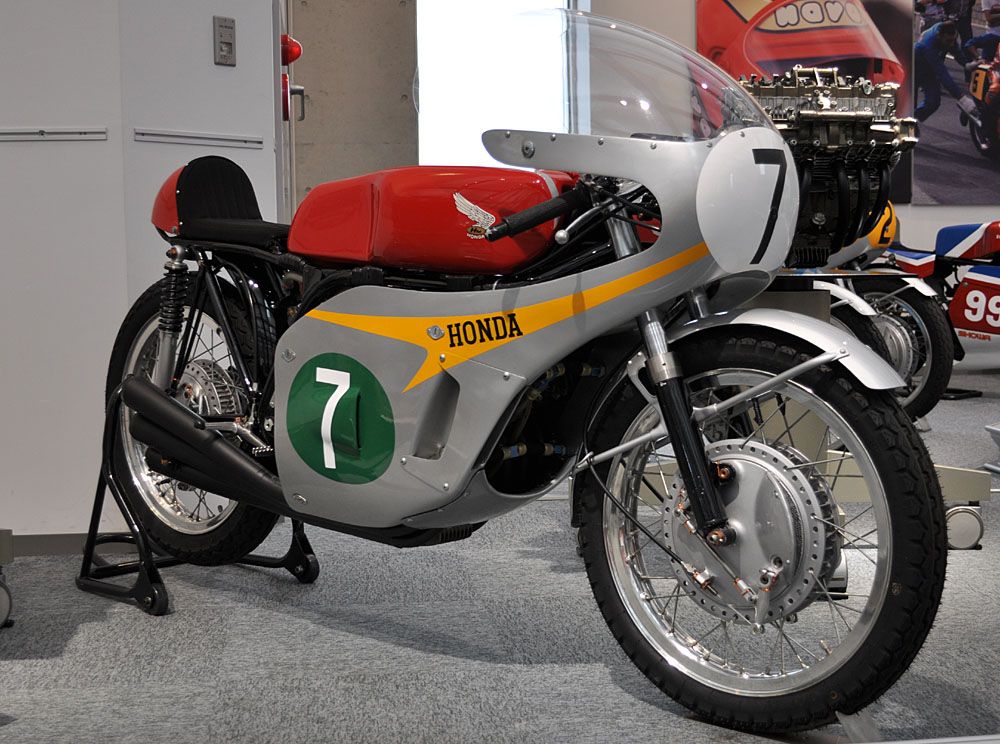
3. **Honda RC166**
From the illustrious golden era of Grand Prix racing in the 1960s emerges the legendary Honda RC166, a machine that remains an unquestionable icon of unparalleled engineering brilliance. Introduced in 1966, this quarter-liter 250cc motorcycle was far more than just fast; it was a breathtaking symphony of precision and raw power, boasting a unique and incredibly complex six-cylinder engine that set it dramatically apart from all its contemporaries on the track. Its very existence was a resounding statement of Honda’s unwavering commitment to innovation.
The RC166’s diminutive “250cc” engine was, without doubt, an engineering marvel, a miniature powerhouse capable of producing an utterly astounding “65 horsepower” at a screaming “18,000 RPM.” This extraordinary power output for its displacement allowed it to utterly dominate the fiercely competitive 250cc World Championship series, securing its indelible place in racing history with an unbroken string of victories that became legendary. It wasn’t merely its blistering speed that captivated audiences; it was the distinctive, high-pitched wail of its “six pipes,” a unique and unforgettable sound that became synonymous with Grand Prix glory and Honda’s mechanical genius.
The RC166’s design ethos emphasized minimal weight and maximum mechanical efficiency, translating into a machine that was not only powerful but also incredibly nimble and responsive on the track. This relentless pursuit of engineering excellence contributed significantly to Honda’s burgeoning reputation in motorsport.
A modern iteration of this iconic machine would be a profound tribute to Honda’s historic ingenuity and an incredibly thrilling prospect for contemporary racing enthusiasts. Such a revival would undoubtedly focus on incorporating cutting-edge lightweight materials and advanced aerodynamic profiles, ensuring that the new RC166 could recapture its historic high-revving magic while effortlessly meeting contemporary performance and stringent design standards. It would represent a spectacular showcase of engineering prowess.
Read more about: Honda’s Roaring Legacy: An Enthusiastic Ride Through the Motorcycles That Defined a Legend

4. **Suzuki RG500 Gamma**
The Suzuki RG500 Gamma stands as a cherished relic from a vibrant era when street-legal versions of Grand Prix racers ruled the roads with an intoxicating blend of performance and exclusivity. Produced between 1985 and 1987, this motorcycle was a direct descendant of Suzuki’s championship-winning 500cc two-stroke Grand Prix machine, offering discerning enthusiasts an unparalleled taste of pure, unadulterated race-bred performance in a surprisingly road-going package. It was, for many, a dream machine.
At its very core, the RG500 Gamma featured a potent “498cc square-four two-stroke engine,” a unique and highly effective configuration directly lifted from its championship-winning brethren. This sophisticated engine was meticulously engineered to deliver a thrilling “95 horsepower,” further complemented by an exhilarating “10,000 RPM redline” that promised an intoxicating surge of power through every gear. Its exceptional combination of immense power, remarkably lightweight construction, and razor-sharp handling immediately made it an instant favorite among serious racing enthusiasts.
The RG500 Gamma was a machine that commanded profound respect, renowned for its incredible lightness and blistering speed, qualities that collectively made every ride an adrenaline-fueled and unforgettable experience. Its direct connection to the Grand Prix circuit gave it an aura of authenticity and performance that few other road bikes could match. This pedigree cemented its place as a cult classic.
In today’s dynamic landscape, with sophisticated advancements in engine management systems, precise fuel delivery, and stringent emissions control technologies, the potential for a triumphant return of the RG500 Gamma is incredibly exciting. A modern version could brilliantly merge that intoxicating two-stroke nostalgia with contemporary performance standards, creating a lightweight, high-performance racing machine that’s both deeply evocative of its glorious past and perfectly attuned to the demands of the present.

5. **Kawasaki KR-1S**
For dedicated enthusiasts of unadulterated two-stroke power and precision, razor-sharp handling, the Kawasaki KR-1S rightfully remains a legendary name within the pantheon of high-performance motorcycles. Produced between 1988 and 1992, this motorcycle quickly earned an outstanding reputation as one of the most powerful two-stroke bikes of its entire era, particularly excelling within the fiercely competitive quarter-liter class. It was a machine meticulously built for pure agility and unadulterated speed, embodying the very essence of Kawasaki’s competitive spirit.
Equipped with a highly responsive and finely tuned “249cc parallel-twin engine,” the KR-1S delivered an impressive power output of “around 60 horsepower,” a remarkable figure for its displacement. This substantial power, meticulously coupled with its exceptionally lightweight design and advanced chassis geometry, transformed it into a formidable weapon on any track. Riders universally revered it for its incredible nimbleness, its precise, almost telepathic handling, and its aggressive cornering capabilities.
The KR-1S exemplified the peak of two-stroke sportbike design, offering a visceral riding experience that many modern four-strokes struggle to replicate. Its direct, immediate power delivery and light overall weight made it incredibly engaging and exhilarating. The focus on performance was absolute, providing a machine that rewarded skilled riders with exceptional feedback and control.
However, as the tide of evolving environmental regulations began to inexorably turn, inevitably leading to the eventual decline of two-stroke motorcycles in mainstream production, the KR-1S, like many of its high-performance two-stroke brethren, gradually faded from prominence. Yet, its inherent spirit and immense potential are far from extinguished. With modern environmental technologies and advanced engine refinements, a new KR-1S could brilliantly resurrect the exhilarating thrills of two-stroke racing, offering a cleaner, more efficient, and equally exhilarating package for a new generation of riders.

6. **Ducati 851**
The Ducati 851 holds an absolutely pivotal and revered place in the illustrious history of the iconic Italian marque, often universally hailed as the definitive motorcycle that single-handedly resurrected Ducati’s racing fortunes from a period of uncertainty. Introduced in 1987, this machine was far more than just a new model; it represented a genuine revolution, meticulously laying the indispensable groundwork for Ducati’s formidable and enduring dominance in the World Superbike Championship throughout the 1990s and significantly beyond. Its arrival signaled a bold, new, and victorious era for the brand.
What made the 851 so utterly revolutionary was its cutting-edge engine design: an 851cc desmodromic, liquid-cooled, fuel-injected L-twin. This remarkable powerplant was truly ahead of its time, delivering a robust “93 horsepower”—a figure that was considered exceptionally potent, genuinely innovative, and class-leading for its specific period. The pioneering introduction of electronic fuel injection alone was a truly significant step forward for Ducati, providing unprecedented precision in power delivery and enhanced overall engine efficiency.
The 851 also boasted a chassis that was equally advanced, providing the rigid foundation needed to harness its powerful engine effectively. Its careful balance of power and handling quickly made it a formidable competitor, allowing riders to extract maximum performance with confidence. This holistic approach to design underscored Ducati’s commitment to building truly race-winning machines.
The unequivocal success and advanced, thoughtful design of the Ducati 851 were instrumental in forging the triumphant path for the legendary 916 and the subsequent lineage of V-twin superbikes. To conceive of reviving the Ducati 851 today, meticulously incorporating the very latest in modern components, cutting-edge technology, and refined manufacturing techniques, would be a profound and fitting homage to this iconic machine. Such an ambitious project would not only offer a contemporary superbike brimming with undeniable vintage appeal but also one perfectly capable of dominating racetracks.

7. **Norton F1**
The Norton F1, dramatically launched in 1990, undeniably represents a fascinating, truly audacious, and distinctive chapter in the broader narrative of motorcycle engineering, daring to profoundly challenge convention with its uniquely innovative heart. This was emphatically not merely another conventional sportbike; it was a radical and bold experiment, powered by a highly distinctive “588cc Wankel rotary engine,” a revolutionary design that promised unparalleled smoothness in power delivery and a distinctive character utterly unlike anything else traditionally found on the road or the competitive race track at that time.
Producing a very respectable “95 horsepower,” the Norton F1 was widely acclaimed for its remarkably smooth and linear power delivery, a characteristic inherently intrinsic to its advanced rotary engine design. This smoothness was complemented by a distinctive, unmistakable, and often mesmerizing sound that immediately set it apart from the more conventional, traditional piston engines dominating the market. Its innovation was undeniable, serving as a powerful and audacious statement about the potential of alternative engine configurations in high-performance motorcycling.
Beyond its unique engine, the Norton F1 also featured a chassis designed for performance, ensuring that the unconventional power plant was effectively integrated into a capable handling package. This combination highlighted the engineering challenge and triumph of adapting a rotary engine to a high-performance motorcycle, a feat that few manufacturers ever dared to attempt with such conviction. Its exotic nature and limited production numbers added to its mystique.
However, despite its ingenuity and remarkably forward-thinking design, the Wankel rotary engine, in its early form, never truly gained significant mainstream traction within the highly competitive and often conservative racing world. This was largely attributable to inherent mechanical complexities in its initial design, combined with lingering concerns regarding its long-term reliability. Yet, with contemporary advancements in sophisticated engine materials and highly efficient cooling technology, the Norton F1 could genuinely experience a triumphant and much-deserved comeback. It possesses the inherent potential to return as a modern, cutting-edge racer, finally delivering its distinctive rotary power in a form that is both reliably robust and exhilaratingly thrilling.
Continuing our exhilarating journey, we now delve into seven more iconic machines that, despite their incredible engineering and significant historical impact, have largely been overlooked or faded from the spotlight. These motorcycles each tell a compelling story of innovation, performance, and the often-unrealized potential that awaits them on the comeback trail. With today’s technology, their inherent strengths can be amplified, making them formidable contenders on modern circuits and revered collector’s pieces. This next segment of our in-depth exploration will meticulously detail their historical significance, technical innovations, and the compelling reasons why they could redefine racing with today’s advanced capabilities. Prepare to be reacquainted with these two-wheeled marvels, whose spirits are far from extinguished.
Read more about: Hold Up! 12 Mind-Blowing Movie Mistakes from Your Favorite 90s Films That Still Spark Debate

8. **Aprilia RS250**
The Aprilia RS250, produced from 1995 to 2002, stands as a testament to the thrilling era of two-stroke racing, drawing direct inspiration from Aprilia’s formidable Grand Prix efforts. This 249cc racer wasn’t merely a production bike; it was a street-legal embodiment of track-bred performance, designed to give enthusiasts a taste of what it felt like to ride a pure competition machine. Its very existence evoked the excitement and visceral feel of Grand Prix Sundays, bringing that intensity to a wider audience.
At its core, the RS250 was powered by a spirited Suzuki RGV250-derived engine, meticulously tuned to produce a vibrant “72 horsepower.” This potent output, combined with its remarkably lightweight chassis, translated into unparalleled agility and razor-sharp handling on the track. Riders consistently lauded the RS250 for its precise steering, immediate feedback, and the exhilarating, unadulterated rush of its two-stroke powerband, making it an incredibly engaging ride.
Indeed, as one of the last truly great two-stroke race bikes to be widely available, the RS250 has cultivated a significant cult following among track enthusiasts and collectors alike. Its status as a high-performance, two-stroke jewel in a world increasingly dominated by four-strokes makes it a special piece of motorcycling history, revered for its purity and uncompromising performance credentials.
Imagining a contemporary reincarnation of the Aprilia RS250 is an incredibly exciting prospect. Equipped with advanced electronic control systems, refined suspension technologies, and modern, highly efficient fuel injection, a revived RS250 could brilliantly reintroduce the raw excitement of two-stroke racing to a new generation. Such a machine would blend nostalgic appeal with cutting-edge performance, creating a lightweight, high-revving track weapon perfectly suited for today’s competitive landscape.
9. **Yamaha OW01 (FZR750R)**
The Yamaha OW01, officially known as the FZR750R, emerged onto the racing scene in 1989 as a highly specialized homologation machine, meticulously crafted to compete at the pinnacle of the Superbike World Championship. This wasn’t a bike built for the masses; it was a bespoke racer thinly disguised for the road, reflecting Yamaha’s unwavering commitment to domination on the global stage. Its purpose was clear: to win races and showcase Yamaha’s engineering prowess.
Propelling the OW01 was a formidable 749cc inline-four engine, a powerplant engineered for high performance, delivering an impressive “121 horsepower.” Beyond its potent engine, the OW01 boasted an array of advanced components for its era, including sophisticated suspension and high-performance brake systems. These features were critical in ensuring that the bike could effectively harness its power and translate it into superior handling and braking capabilities on challenging race circuits.
Despite its exceptional handling characteristics and undeniable racing pedigree, the OW01 often found itself overshadowed by fiercely competitive rivals such as the legendary Honda RC30. While it delivered stellar performance and was highly capable, it sometimes struggled to capture the same level of widespread acclaim or achieve the same market impact as some of its contemporaries, leading to its relative obscurity in mainstream memory.
However, the prospect of reviving the OW01 with the benefit of modern superbike technology is genuinely thrilling. Such a project would not only reignite its status as a racing legend but also provide discerning track enthusiasts with a truly cutting-edge, race-ready machine. By integrating today’s advancements in materials, electronics, and aerodynamics, a new OW01 could stand as a profound homage to its illustrious past, simultaneously setting new benchmarks for performance.

10. **MV Agusta 500 Three**
From the illustrious annals of Grand Prix motorcycle racing in the 1960s, the MV Agusta 500 Three emerges as a true titan, a machine that utterly dominated the competitive landscape. This iconic motorcycle achieved unparalleled success, clinching multiple World Championships with legendary riders such as Giacomo Agostini at its helm. Its mere presence on the grid was a statement of intent, and its victories solidified MV Agusta’s position at the very pinnacle of motorsport.
At the heart of this championship-winning machine lay a finely crafted 498cc inline-three engine. For its time, this powerplant was a marvel of engineering, capable of producing approximately “70 horsepower,” a significant output that contributed directly to its racing dominance. The meticulous design and sophisticated mechanics of the MV Agusta 500 Three ensured it was not only powerful but also incredibly refined, allowing for consistent, race-winning performance.
Becoming synonymous with racing success and Italian engineering excellence, the MV Agusta 500 Three nevertheless gradually receded from prominence as the tides of technological evolution shifted, and more powerful four-stroke engines began to assert their dominance in Grand Prix racing. Despite its glorious past, the era of its particular configuration eventually gave way to new innovations, leaving its legend primarily in the history books.
Today, a thoughtful revival of this iconic machine, meticulously utilizing modern materials and cutting-edge engine technology, would be a monumental undertaking. Such a project would allow MV Agusta to powerfully reassert its historic racing legacy, demonstrating a seamless blend of revered heritage with contemporary performance. It would be a testament to its enduring design and a thrilling spectacle for enthusiasts to behold on the track once more.
Read more about: Powering the Ride: A Deep Dive into the World’s 15 Largest Motorcycle Brands and Their Global Impact

11. **Suzuki GSX-R750 SRAD**
The Suzuki GSX-R750 SRAD, produced between 1996 and 1999, was far more than just another sportbike; it was a revolutionary machine that undeniably set a new benchmark for the fiercely competitive 750cc class. Its arrival marked a significant turning point in motorcycle design, introducing innovative concepts that profoundly influenced subsequent sportbike development across the industry. This bike quickly became a reference point for performance and style.
Driving the GSX-R750 SRAD was a potent 749cc inline-four engine, delivering an impressive “134 horsepower,” a figure that firmly placed it at the forefront of its category. A standout feature was its pioneering “Suzuki Ram Air Direct” (SRAD) aerodynamic technology, which was ingeniously designed to force-feed air into the engine at high speeds. This innovative system significantly improved performance, making the SRAD faster and more efficient on both the track and the open road.
The SRAD was widely celebrated for its exceptional balance between raw power and remarkable agility. Its chassis provided precise handling, allowing riders to exploit its formidable engine with confidence, making it a firm favorite among enthusiasts for both spirited street riding and aggressive track days. This harmonious blend of attributes solidified its reputation as a truly versatile and high-performing machine.
A revival of this iconic model, meticulously incorporating today’s most advanced aerodynamics, sophisticated electronic control systems, and lightweight materials, would undoubtedly reinvigorate profound interest in the 750cc racing class. Such a modern interpretation of the GSX-R750 SRAD would offer a perfect fusion of its celebrated heritage with cutting-edge performance, creating a highly desirable machine for a new generation of riders and collectors.
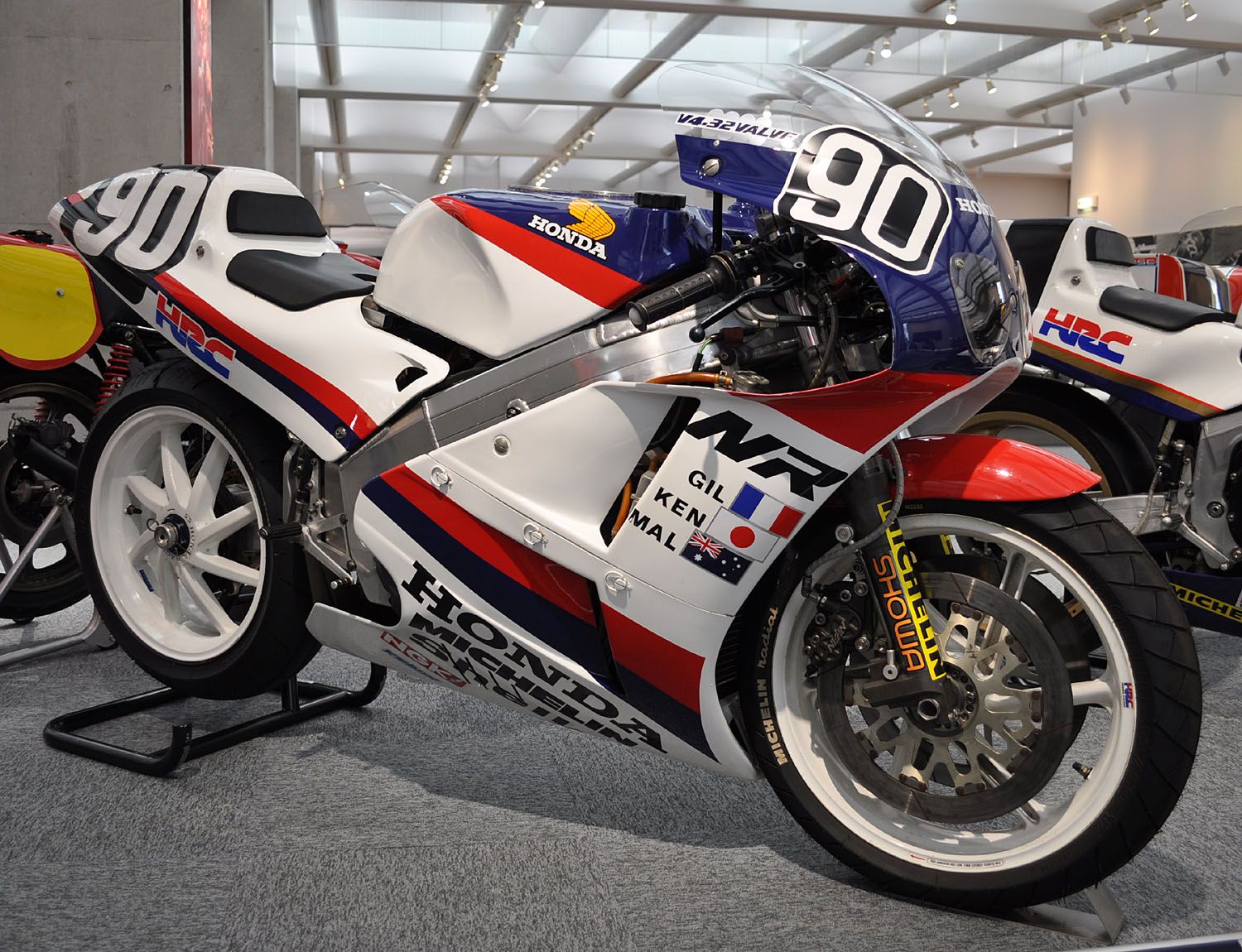
12. **Honda NR750**
The Honda NR750, unveiled in 1992, represented a pinnacle of motorcycle engineering and audacious design, standing as one of the most technically advanced machines of its era. This remarkable motorcycle was defined by its truly unique “750cc V4 engine with oval pistons,” a design that pushed the boundaries of conventional engine architecture and captivated the imagination of the automotive world. It was a bold statement of Honda’s innovative spirit.
This ingenious oval piston design allowed the V4 engine to function almost like a V8, effectively permitting four valves per cylinder and two connecting rods per piston. The result was a powerplant capable of producing a formidable “125 horsepower,” renowned for its incredibly high-revving nature and distinct, futuristic mechanical symphony. This engineering marvel was a testament to Honda’s unwavering pursuit of performance and technological superiority.
Despite its groundbreaking engineering and stunning futuristic design, the NR750’s journey was characterized by both its inherent complexity and a prohibitively high cost of production. These factors collectively limited its manufacturing to an incredibly small number of units, cementing its status as an exotic, rare, and almost mythical machine rather than a mainstream contender. Its brilliance was undeniable, yet its accessibility was virtually non-existent.
A modern version of the NR750 could ingeniously capitalize on its unique engineering legacy. By integrating contemporary advancements in materials science, precision manufacturing, and advanced reliability features, such a revival could offer racing enthusiasts an innovative and exceptionally high-performance machine. It would finally realize the NR750’s full potential, delivering its distinctive V8-like power with modern-day dependability and exhilarating performance.
Read more about: The 20 Most Iconic and Game-Changing Honda Motorcycles of All Time
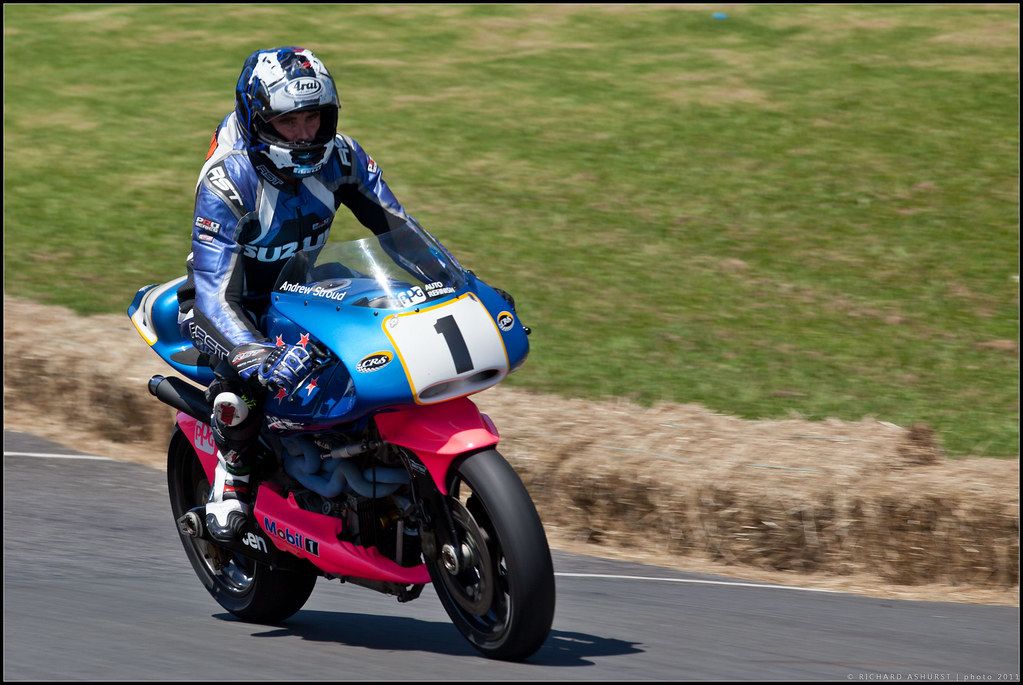
13. **Britten V1000**
The Britten V1000, conceived and brought to life by the visionary New Zealand designer John Britten in the 1990s, is not merely a motorcycle; it is a profound legend in the annals of racing, celebrated universally for its revolutionary design and astonishing performance capabilities. This bike defied conventions and challenged established giants, emerging from a small workshop to conquer international race tracks, a true David among Goliaths.
At its heart, the V1000 was powered by a bespoke 999cc V-twin engine, generating an incredible “166 horsepower.” However, its true genius lay in its pioneering use of advanced lightweight materials and integrated design. The V1000 was far ahead of its time, featuring a carbon fiber frame, an innovative carbon fiber front suspension, and a carbon fiber swingarm. This radical approach resulted in an exceptionally light yet immensely strong machine.
What truly cemented the Britten V1000’s legendary status was its remarkable ability to dominate races against far larger, factory-backed teams, despite being built with limited resources in a small, independent workshop. This underdog triumph served as irrefutable proof of Britten’s unparalleled engineering genius and his fearless willingness to innovate beyond traditional boundaries, capturing the hearts of enthusiasts worldwide.
A revival of the Britten V1000 today would serve as an incredibly fitting and profound homage to its innovative spirit. By combining its original, groundbreaking design philosophy with the very latest in materials science and performance technology, such a project could offer a lightweight, ultra-high-performance racer perfectly optimized for modern tracks. It would be a powerful testament to John Britten’s enduring legacy and an inspiring example of what can be achieved with visionary design.
Read more about: Riding That Eight-Year-Old Motorcycle? Here’s What Fellow Bikers *Secretly* Think About You (and Why It Matters).

14. **Suzuki T500 Titan**
The Suzuki T500 Titan, produced from 1968 to 1975, was a distinguished 500cc two-stroke twin that earned a formidable reputation not for flamboyant speed, but for its rock-solid durability and prodigious torque delivery. While it might not have possessed the immediate flash and audacious styling of some of its more celebrated contemporaries, the T500 offered a steadfast reliability that was deeply appreciated by a particular segment of riders.
This robust motorcycle carved out a significant niche for itself among endurance racers, primarily owing to its inherent and unwavering reliability. Producing a respectable “47 horsepower,” the T500 embodied a simple yet remarkably effective design philosophy that allowed it to perform consistently and admirably in demanding racing conditions, as well as providing a dependable mount for extended touring. Its straightforward mechanics made it a practical and enduring choice.
While not initially designed as a Grand Prix challenger, the T500’s unwavering performance and simple maintenance fostered a dedicated following. It was a bike that could take a beating and keep on going, qualities that resonated deeply with riders who valued functionality and longevity over outright, fleeting speed. Its legacy is one of a dependable workhorse with a surprisingly potent heart.
A modern iteration of the T500, meticulously equipped with advanced two-stroke technology, sophisticated fuel injection systems, and a meticulously crafted lightweight frame, could effectively reignite interest in the often-overlooked realm of classic endurance racing. Such a revived machine would offer a unique blend of vintage character and modern performance, appealing to enthusiasts who appreciate a robust, high-torque two-stroke with enduring capabilities for both track and road.
Read more about: Honda’s Roaring Legacy: An Enthusiastic Ride Through the Motorcycles That Defined a Legend
As we conclude this profound journey through the annals of motorcycling history, it’s clear that the allure of these forgotten finds transcends mere nostalgia. Each machine, from the high-revving two-strokes to the revolutionary oval-piston marvels, embodies a spirit of innovation that continues to resonate. Their stories are not just tales of past glory, but compelling blueprints for what could be. With today’s relentless march of technological progress, these slumbering giants possess the very DNA to roar back to life, blending their iconic soul with cutting-edge performance. For the discerning enthusiast, this isn’t just about collecting a piece of history; it’s about imagining a future where these legends once again redefine the thrill of the ride, pushing boundaries and captivating a new generation of speed aficionados. The comeback trail is wide open, and the potential for these machines to become iconic, rather than Icky, is incredibly real.


